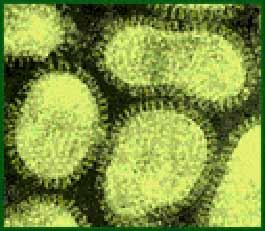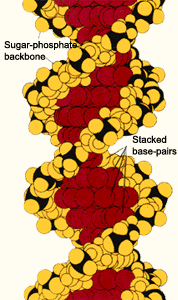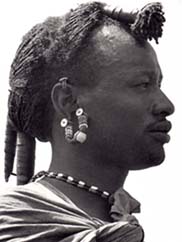|
Most of us have healthy intentions when it comes to the food we
eat. But it can be tough. Especially when you consider that our
bodies haven't properly adapted to our highly processed fast food
diets.
by Cindy Engel
The only
way to keep your health is to eat what you don't want, drink what
you don't like, and do what you'd rather not.
- Mark Twain, 1897
One hundred years ago, the leading causes
of death in the industrial world were infectious diseases such as
tuberculosis, influenza, and pneumonia. Since then, the emergence
of antibiotics, vaccines, and public health controls has reduced the
impact of infectious disease. Today the top killers are noninfectious
illnesses related essentially to lifestyle (diet, smoking, and lack
of exercise). The major causes of death in the United States in 1997
were heart disease, cancer (of the breast, colon, and lung), and stroke.
Chronic health problems such as obesity, noninsulin-dependent diabetes,
and osteoporosis, which are not necessarily lethal but nonetheless
debilitating, are steadily increasing, and our psychological health
appears to be deteriorating at an alarming rate.
In the United Kingdom,
suicides by young men have increased by 176 percent since 1985,
and according to the World Health Organization, depression currently
disables 20
percent of the global population. Economic and technical progress
is
no assurance of good health.
Humans are qualitatively
different from other animals because we
manipulate the flow of energy and resources through the ecosystem
to our advantage, and consequently to the detriment of other organisms.
That is why we compete so successfully with other species. But
with this success come some inherent failings, particularly in terms
of our health.

Image
Credit
Influenza
virus (an Orthomyxovirus) is responsible for acute upper
respiratory disease, usually accompanied by fever and myalgia.
|
According to physician
Boyd Eaton and his anthropologist colleagues, despite all our technological
wizardry and intellectual advances, modern humans are seriously
malnourished. The human body evolved to eat a very different diet
from that which most of us consume today. Before the advent of agriculture,
about ten thousand years ago, people were hunter-gatherers, living
on fruit, vegetables, and lean meat. The foods varying with the
seasons and climate, and all obtained from local sources. Our ancestors
rarely, if ever, ate grains or drank the milk of other animals.
Although ten thousand years seems a long time ago, 99.99 percent
of our genetic material was already formed. Thus we are not well
adapted to an agriculturally based diet of cereals and dairy products.
Our genes evolved to work
in an environment of a hunter-gathering
diet. Although adaptation has continued, at least one hundred
thousand generations of people were hunter-gatherers; only five
hundred generations have depended on agriculture, only ten generations
have lived since the onset of the industrial age, and only two
generations have grown up with highly processed fast foods. There
has simply not been time for our bodies to adapt to such a dramatic
change. Physicians Randolph Nesse and George Williams write:
"Our bodies were designed over the course of millions of years
for
lives spent in small groups hunting and gathering on the plains
of
Africa. Natural selection has not had time to revise our bodies
for
coping with fatty diets, automobiles, drugs, artificial lights,
and central
heating. From this mismatch between our design and our environment
arises much, perhaps most, preventable modern disease."
Do we really want to eat
like prehistoric humans? Surely "cavemen"
were not healthy. Surely life was hard and short. Apparently
not. Archaeological evidence indicates that these hunter-gatherer
ancestors
were robust, strong, and lean, with no sign of osteoporosis or
arthritis-even at older ages.

DNA Molecule
|
Paleolithic humans ate a diet similar
to that of wild chimpanzees and gorillas: fresh raw fruit, nuts, seeds,
vegetation, fresh untreated water, insects, and wild-game meat low
in saturated fats. Much of their food was hard and bitter. Most important,
like chimpanzees and gorillas, prehistoric humans ate a wide variety
of plants-an es- timated one hundred to three hundred different types
in one year. Nowadays, even health-conscious Westerners seldom consume
more than twenty to thirty different species of plants. A broad range
of plants provides not only essential vitamins and minerals but also
valuable secondary plant compounds integral to preventive and curative
medicine.
The early human diet is
estimated to have included more than 100
grams of fiber a day. Today the recommended level of 30 grams is
rarely achieved by most of us. Humans and lowland gorillas share
similar digestive tracts-in particular, the colon-but while gorillas
derive up to 60 percent of their total energy from fiber fermentation
in the colon, modern humans get only about 4 percent. When
gorillas are brought into captivity and fed on lower-fiber diets
containing
meat and eggs, they suffer from many common human disorders:
cardiovascular disease, ulcerative colitis, and high cholesterol
levels. Their natural diet, rich in antioxidants and fiber, apparently
prevents these diseases in the wild, suggesting that such a diet
may
have serious implications for our own health.

NASA Photo by Tony Landis
Monkeys
on a film set
|
Contemporary hunter-gatherer
societies still eat in the traditional way and, like our prehistoric
ancestors, have far less cancer, heart disease, diabetes, and osteoporosis
than those of us who forage in supermarkets. "Sickness is much
more prevalent, pervasive, and diverse among agriculturists than
among hunter-gatherers," explains anthropologist Michael Logan,
and it is not because the hunter gatherers die before these ills
can develop. A decline in health is seen with the transition to
agriculture. As native tribes of what is now the south central United
States abandoned their hunter-gathering lifestyle some fifteen hundred
years ago, their worsening health was indelibly recorded in their
skeletal remains. Although more of them survived the famines than
did their ancestors, they were not as healthy. They were less robust
and showed signs of deficiencies of vitamin B, iron, and protein.
Agriculture overcomes the vagaries of seasonal food supply, but
at a price. And as contemporary hunter gatherers change to an industrialized
diet high in fats and sugar and low in fiber, they too develop the
diseases of the industrial world.
Agriculturists select
and domesticate plants for ease of cultivation and palatability.
Over time they have chosen plants with fewer bitter-tasting or astringent
secondary compounds, and these plants are inevitably more susceptible
to disease. Modern crops, therefore, need more chemical intervention
than wild plants, which retain their own defensive pesticides. Consuming
modern crops is consequently very different from consuming wild
plants, and when we eat the meat of domesticated animals fed on
these domesticated plants, our total intake of beneficial plant
compounds is far lower than if we had eaten wild game.

NOAA Native tribe
in the southern Philippines - Hundreds of tribes and over
a 100 dialects were found in the Philippines during
the 1930's
|
Furthermore, agricultural
biodiversity is shrinking as fewer species and varieties are made
available for cultivation. Today 75 percent of the global food supply
comes from a mere twelve crop species. Not only are we losing species
diversity but we are losing varieties within those species. The
demise of dietary diversity is exacerbated by modern processing,
in which artificial chemicals instead of herbs are used to preserve,
enhance the taste of, and add colour or other properties to food.
Our industrial diet is greatly weakened thereby in both nutritional
and medicinal attributes, providing us with only the bare essentials
of energy and protein.
Not all agricultural societies
have taken the same road. Many traditional agriculturists maintain
the diversity of their diet by eating a variety of herbs and other
plant compounds along with meat and grains. The Huasa people of
northern Nigeria, for example, traditionally include up to twenty
wild medicinal plants in their grain based soups, and peoples who
have become heavily reliant on animal products have found ways of
countering the negative effects of such a diet.When animal fat is
metabolised in the body, it produces damaging free radicals that
contribute to cardiovascular disease, cancer, and aging.

Masai
Warrior
|
While the Masai of Africa
eat meat and drink blood, milk, and animal fat as their only sources
of protein (animal fat makes up 60 percent of their energy intake),
they suffer less heart trouble than Westerners. One reason is that
they always combine their animal products with strong bitter, antioxidant
herbs-up to twenty-eight additives in each meat-based soup, and
twelve substances added to milk! In other words, the Masai have
balanced the intake of oxidizing and antioxidizing compounds. According
to Timothy Johns, it is not the high intake of animal fat, or the
low intake of antioxidants, that causes so many health problems
in industrial countries; it is the lack of balance between the two.
Eating the right foods
and natural medicines requires a sensitivity to subtle changes in
appetite. Do I fancy something sweet, sour, salty, stimulating,
or sedating? What sort of hunger is it? And, after consumption,
has the "need" been satisfied? Such subtleties are easily
overridden by artificially created superstimuli in processed foods
that leave us unable to select a healthy diet. We need to listen
more carefully to our body's cravings and take an intentional role
in maintaining our health before disease
sets in.
|
An abridged extract from
Wild Health - How Animals Keep Themselves Well and What We
Can Learn From Them by Cindy Engel (c) Used
with permission. Published by Weidenfeld and Nicolson in the
UK and Houghton Mifflin Company in the US
Available to buy from Amazon.co.uk
and Amazon.com
Cindy Engel earned a PhD in
animal behaviour from the University of East Anglia. As well
as lecturing for the Open University, she is also a freelance
radio and television science advisor.
|
 |
|
|
